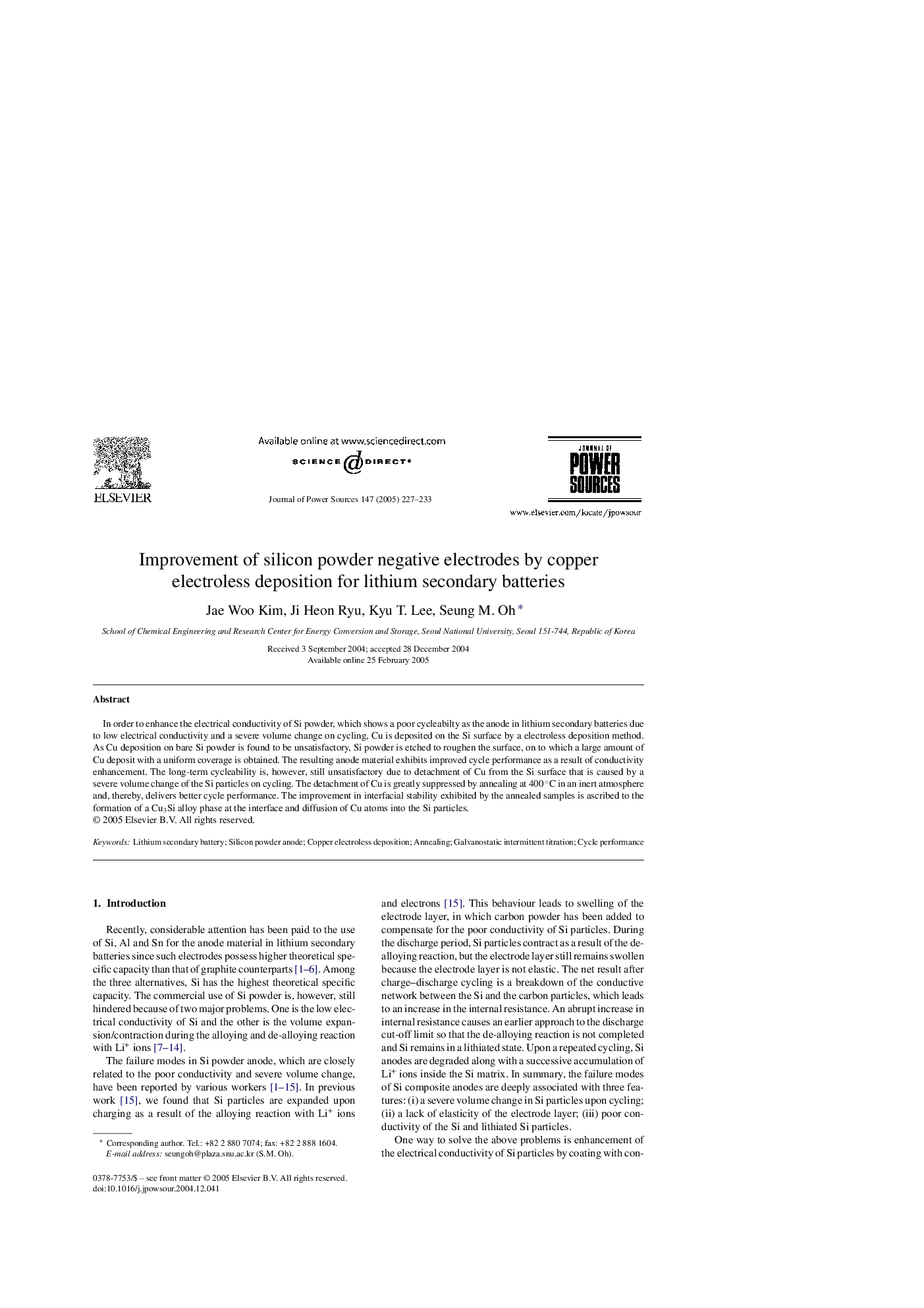| Article ID | Journal | Published Year | Pages | File Type |
|---|---|---|---|---|
| 9760258 | Journal of Power Sources | 2005 | 7 Pages |
Abstract
In order to enhance the electrical conductivity of Si powder, which shows a poor cycleabilty as the anode in lithium secondary batteries due to low electrical conductivity and a severe volume change on cycling, Cu is deposited on the Si surface by a electroless deposition method. As Cu deposition on bare Si powder is found to be unsatisfactory, Si powder is etched to roughen the surface, on to which a large amount of Cu deposit with a uniform coverage is obtained. The resulting anode material exhibits improved cycle performance as a result of conductivity enhancement. The long-term cycleability is, however, still unsatisfactory due to detachment of Cu from the Si surface that is caused by a severe volume change of the Si particles on cycling. The detachment of Cu is greatly suppressed by annealing at 400 °C in an inert atmosphere and, thereby, delivers better cycle performance. The improvement in interfacial stability exhibited by the annealed samples is ascribed to the formation of a Cu3Si alloy phase at the interface and diffusion of Cu atoms into the Si particles.
Related Topics
Physical Sciences and Engineering
Chemistry
Electrochemistry
Authors
Jae Woo Kim, Ji Heon Ryu, Kyu T. Lee, Seung M. Oh,
